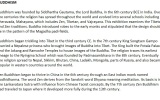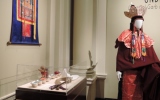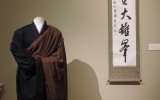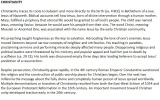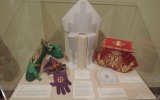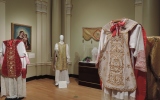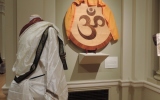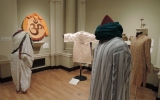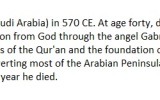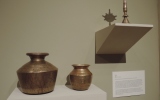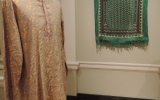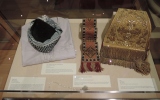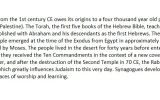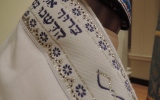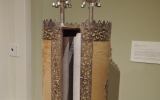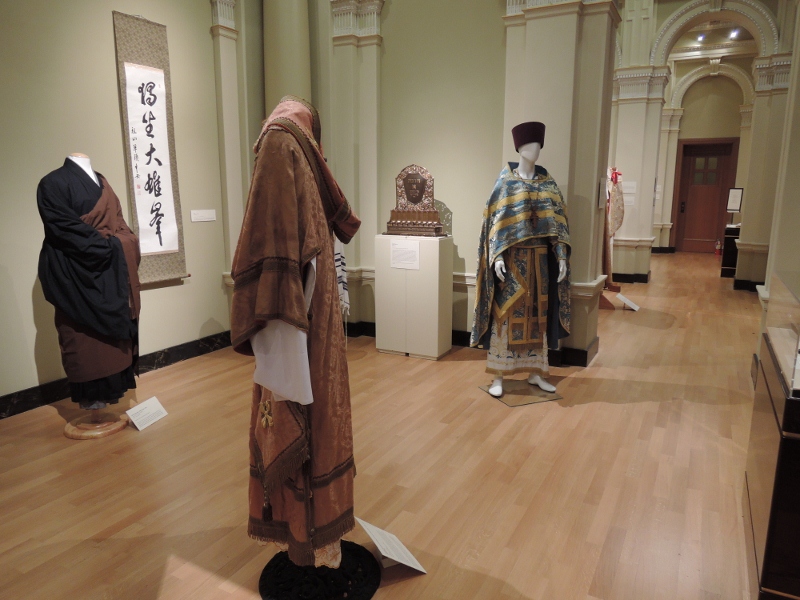March 8 – June 21, 2015
Vesture and objects from Tibetan and Zen Buddhism, Christianity, Hinduism, Islam, and Judaism are displayed together within the four gallery alcoves.
The increased intermingling of disparate cultures in our own times has encouraged people to explore an encounter with the Other as an engagement with multiple others: an opportunity to re-imagine one’s own individual and group identity as at least partially drawn by what one sees mirrored in other traditions. Under Cover: Liturgical Garb as Investment in Mystery presents dramatically varied cultural examples drawn from the collections of individuals and established religious organizations in the Bay Area. Similarities in visual design, if not ritual practice can be observed in garments and objects used for worship.
Vesture and objects from Tibetan and Zen Buddhism, Christianity, Hinduism, Islam, and Judaism offer distinct journeys. Parallel developments in thought and aesthetics can be viewed in the garments and objects on display. Historically, trade between polities affected the variety of color and compositional dynamics available not only for daily use but also for liturgical garments. For example, the silk trade brought fine textiles from China to the Americas and Europe that were often fashioned into Christian vestments, so richly embroidered that they resembled paintings. Quite evident is the cultural impact of Greco-Roman dress especially on early Christian and Buddhist religious garb.
More importantly, they remind the viewer that religions can share not only visual similarities but also conceptual insights, and even practices. Worship services traditionally offer the opportunity for a group to move confidently beyond a sense of being caught in a fallible earthly dilemma, to secure hope in an integrated Beyond.
